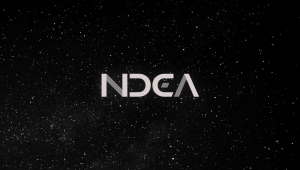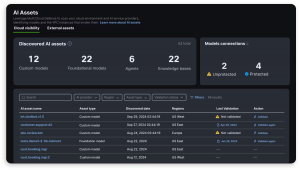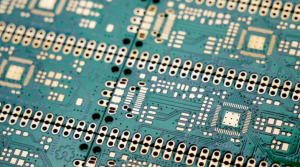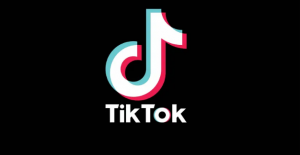What Early Tablet Designs Were Conquered by the iPad?
![]() Earlier this morning, I mentioned in our mobile news roundup how Nokia regrets not releasing their smartphone and tablet – if they had, there’s a possibility that Nokia would still be leading the tech race instead of losing out to Apple. But if any of you can remember back that far, several tablets emerged in the years leading up to the iPad, they just proved little market value without the mobile ecosystem smartphones have since ushered in.
Earlier this morning, I mentioned in our mobile news roundup how Nokia regrets not releasing their smartphone and tablet – if they had, there’s a possibility that Nokia would still be leading the tech race instead of losing out to Apple. But if any of you can remember back that far, several tablets emerged in the years leading up to the iPad, they just proved little market value without the mobile ecosystem smartphones have since ushered in.
Turns out Nokia did release a tablet: the Nokia 770 in 2005 and the Nokia N800 in 2007. Long before Apple released the iPad. So what happened? Apparently, the two tablets were quite slow in responding, had problems recognizing handwriting, and poor battery life just made it huge chunk of junk.
Nokia’s earlier tablets didn’t have a multi-touch screen, and even if it did, that wouldn’t have made much of a difference because it was just too darn slow.
But Nokia wasn’t the only one with tablet regrets. Here’s some other designs and concepts that didn’t quite make the cut.
iPad, I am your father!
![]() In 1968, Alan Kay had a concept for a tablet-looking computer which many deem the ancestor of the laptop, but some think it’s where the concept of tablets came from. The device was known as the Dynabook. Though tablets these days are directed at adults for personal or work use, the Dynabook was supposed to be a device that brings media content to children.
In 1968, Alan Kay had a concept for a tablet-looking computer which many deem the ancestor of the laptop, but some think it’s where the concept of tablets came from. The device was known as the Dynabook. Though tablets these days are directed at adults for personal or work use, the Dynabook was supposed to be a device that brings media content to children.
Though the technology needed to create Dynabook is already available, Kay has yet to make this happen. And even though there are lots of available tablets these days, Kay still thinks that nothing comes close to the Dynabook as it lacks key software and educational curriculum.
Tablet concepts
Ecopad
![]() The hazards of using any mobile device is when your battery runs out when you’re doing something important. The concept behind the ecopad tablet eliminates that exact problem, as the battery charges the more you use the device. Because of the the NANO piezoelectricity film on the touch screen, a user just needs to touch the screen to use it. So no more frantically searching for an outlet to plugin your device.
The hazards of using any mobile device is when your battery runs out when you’re doing something important. The concept behind the ecopad tablet eliminates that exact problem, as the battery charges the more you use the device. Because of the the NANO piezoelectricity film on the touch screen, a user just needs to touch the screen to use it. So no more frantically searching for an outlet to plugin your device.
The ecopad was designed by Yonggu Do, Jun-Se Kim, and Eun-Ha Seo as an entry to the Fujitsu Design Award 2011.
MacBook Page
A fatter Apple tablet designed by Devindh Baburam. What makes this different from the iPad is that it can be charged wirelessly via a hidden, built-in solar panel. It also boasts a larger screen with an edge-to-edge interactive desktop. It’s as big as a sheet of A4 paper. It’s designed at an angle so it’s easier to type something using the on-screen keyboard.
File-Top
This tablet concept was designed by Fan Zhang. What makes the design unique is that it brings together the functionality of a widescreen PC, laptop and tablet in one portable device. IT has a foldable design comprised of several flexible translucent screens that resembles a document folder.
Fractal
Designed by Pedro Calle, the tablet is designed in a way that it can be used as a whole tablet, but can be divided into separate smaller pieces for sharing. It can be used to share information to a lot of people as all the components store the same thing, or the smaller parts of the tablet can be used to complement the bigger tablet: the big segment can serve as a screen, the longer segment can serve as a keyboard, and the smaller pad can serve as a mouse or tracking pad.
Samsung Flexible AMOLED
Last year, there were rumors that Samsung was making a flexible smartphone dubbed as Galaxy Skin. Then before the year ended, a video surfaced featuring a flexible, transparent tablet from Samsung. The Samsung Flexible AMOLED video showed that the tablet was capable of augmented reality, 3D/holographic technologies and as the name implies, it’s flexible so it would be quite easy to store.
A message from John Furrier, co-founder of SiliconANGLE:
Your vote of support is important to us and it helps us keep the content FREE.
One click below supports our mission to provide free, deep, and relevant content.
Join our community on YouTube
Join the community that includes more than 15,000 #CubeAlumni experts, including Amazon.com CEO Andy Jassy, Dell Technologies founder and CEO Michael Dell, Intel CEO Pat Gelsinger, and many more luminaries and experts.
THANK YOU









